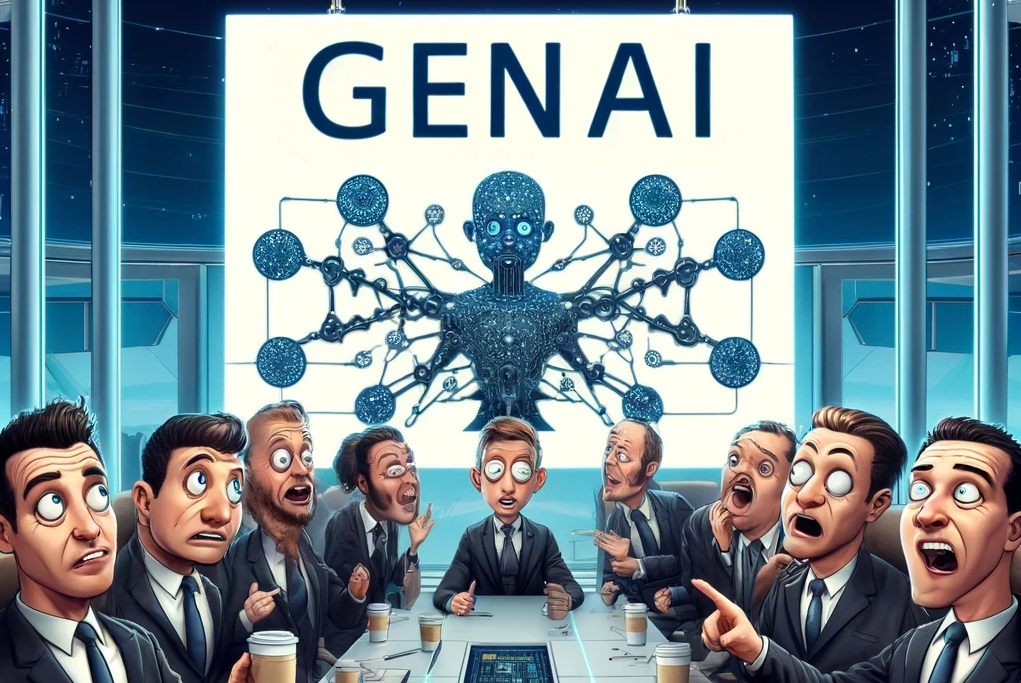Why 'GenAI' Isn't the Right Term: A Reality Check for AI Buzzword Enthusiasts

The term “Generative AI” (GenAI) has surged in popularity among business leaders and tech enthusiasts, often hailed as the next big thing in artificial intelligence. However, this catch-all label is increasingly misapplied, especially when it comes to complex AI systems like LangChain and CrewAI. These systems do far more than just generate content; they automate intricate workflows, integrate diverse tools, and coordinate multiple AI agents. Here’s why “GenAI” doesn’t do them justice.
Understanding Generative AI
Generative AI refers to AI systems designed to create new content. This includes:
- Text generation: Models like ChatGPT that produce human-like text responses.
- Image creation: Tools like DALL-E that generate images from textual descriptions.
- Music composition: AI models that craft original music tracks.
These applications are straightforward examples of AI generating new outputs from given inputs, embodying the essence of GenAI.
The Complexity of Task Automation Systems
However, AI frameworks like LangChain and CrewAI extend beyond simple generation:
- Task Automation: These systems automate complex, multi-step processes. For example, CrewAI can manage content creation pipelines, data analysis tasks, and customer service operations by orchestrating multiple AI agents with specific roles and tasks 1 2.
- Tool Integration: LangChain integrates various tools and databases, enhancing the AI’s capabilities. This includes vector databases for data storage, APIs for real-time data access, and custom tools for specific tasks like web scraping 3 4.
- Multi-Agent Coordination: Platforms like CrewAI coordinate multiple AI agents, each performing specific roles. This involves predefined instructions and expected outcomes, reducing the open-ended nature typically associated with generative AI 1 2.
The Misleading Nature of “GenAI”
Using “GenAI” to describe these complex systems is misleading for several reasons:
Misplaced Expectations
- Creativity and Autonomy: GenAI implies a high level of creativity and autonomous decision-making. While language models are part of these systems, their use is structured and goal-oriented, diverging from the open-ended creativity associated with pure generative AI 5 6.
Overlooking Tool Integration and Process Automation
- Task Complexity: LangChain and CrewAI handle sophisticated tasks involving data retrieval, processing, and analysis. These processes are meticulously orchestrated and involve multiple integrations, making them far more than just generative tools 3 4.
Undermining Multi-Agent Systems
- Structured Coordination: Systems like CrewAI demonstrate how AI agents work together to perform complex tasks. Each agent operates within well-defined parameters, significantly structuring their actions and diminishing the open-ended generative aspect 1 2.
Real-World Examples
LangChain
LangChain is designed to integrate language models with various other components:
- Vector Databases: Used for storing and querying large datasets.
- APIs: Provide access to real-time data and services.
- Custom Tools: Employed for tasks like web scraping and data analysis 3 4.
These integrations make LangChain a tool for orchestrating capabilities, not merely generating new content.
CrewAI
CrewAI automates workflows by setting up AI agents for specific tasks:
- Content Creation Pipelines: Agents generate drafts, refine content, and optimize for SEO.
- Customer Service: AI handles routine inquiries and escalates complex issues to human operators 1 2.
This multi-agent approach highlights the structured and automated nature of these systems, which is far from the open-ended creativity implied by GenAI.
Conclusion
Labeling complex AI systems like LangChain and CrewAI as “GenAI” oversimplifies their functionality and misrepresents their capabilities. While they leverage generative models, these systems are fundamentally about task automation, tool integration, and multi-agent coordination. Recognizing this distinction is crucial for appreciating the full scope and potential of these advanced AI frameworks.
By understanding the limitations of the term “GenAI,” we can better appreciate the innovative ways AI is being applied to solve real-world problems, beyond mere content generation. This clarity helps set realistic expectations and promotes a more nuanced view of AI technologies in the business and tech communities.